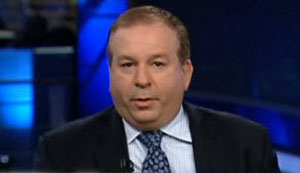 The news of yuan’s gradual revaluation has sparked a global rally in equities prompting investors to shed safer assets and take on more risk.
The news of yuan’s gradual revaluation has sparked a global rally in equities prompting investors to shed safer assets and take on more risk.
In his morning note, David Rosenberg argues against the idea that China’s currency shift is a game changer.
Here’s part of what Rosenberg says:
From Gluskin-Sheff
” [T]he safe haven of government bonds has lots of allure as long-term yields back up in response and offer up another opportunity for the Treasury bulls to re-load. CDS spreads are also plunging as investors turn their attention away from the global debt challenges, which most assuredly have not gone away just because of improved Chinese FX flexibility. The view that China will be “recycling” fewer dollars is a tad strange because if the U.S. current account deficit shrinks, as it should, then we are not going to need funding in any event. The capital account and the current account have to balance so these oft-stated remarks that the rise in Treasury yields will be sustained misses two facts:
First, China has not added anything to its hoard of U.S. Treasury securities since June 2009. In fact, it has run down its holdings by a modest amount. Guess what? The yield on the U.S. 10-year note has dropped 40 basis points, to 3.3% over that period. Go figure.
Second, let’s recall when China last made such a dramatic announcement with regards to the FX market, which was back on July 21, 2005 when it first moved away from the dollar peg, the consensus view then was similar: buy risky assets, sell the U.S. dollar, secure inflation protection, unload your Treasury position. In the immediate aftermath of that announcement, we admittedly had a knee jerk reaction where Treasuries and the U.S. dollar sold off and commodities and equities rallied in tandem. Over the next three years (the revaluation was terminated in July 2008), here is what happened:
The DXY did indeed go from 85 to 70, but … China’s holdings of U.S. Treasury securities never did go down – they went up to $550 billion from $300 billion.
During that three-year yuan revaluation, the yield on the 10-year T-note fell 80 basis points to 3.7%. The S&P 500 went from 1,230 to 1,260 so it was basically flat. In fact, the total return in the Treasury market more than doubled that of the equity market. And, the VIX index in that three-year period soared from 10x to 25x and had yet to come close to peaking out.
So the only correct call by the intelligentsia in the summer of ‘05 was that the dollar did continue to lose ground. In the final analysis, looking at that entire three-year period of Chinese currency revaluations (and since!) the primary trend has been lower bond yields and lower equity valuation. This was not being predicted in July 2005, and it not being predicted today.
Let’s finish off by saying that at the time, the initial Chinese revaluation was being billed as this huge “reflationary” event. Meanwhile, the core inflation rate sits today at 0.9% compared with 2.1% back then, and the headline rate was over 3% then whereas it is 2% on the nose today. It goes without saying that not even Chinese initiatives in the FX market, no matter how much they can dominate the headlines as is the case today, ultimately proved to be no panacea against a collapse in the U.S. credit and housing markets, deflationary pressures, a huge global recession and a European sovereign default crisis. Let’s not take our eye off the ball. The global deleveraging cycle is still in full swing, is an intensely deflationary development, and as much as the Chinese revaluation will at the margin help to ease global trade imbalances, it very likely will prove to be every bit the antidote it wasn’t when it first moved to a crawling peg a half-decade ago.”
- Bulenox: Get 45% to 91% OFF ... Use Discount Code: UNO
- Risk Our Money Not Yours | Get 50% to 90% OFF ... Use Discount Code: MMBVBKSM
Disclaimer: This page contains affiliate links. If you choose to make a purchase after clicking a link, we may receive a commission at no additional cost to you. Thank you for your support!

Leave a Reply